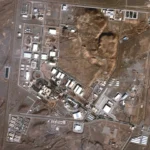Introduction
The G7 Summit 2025 is officially underway from June 15–17 in the remote town of Kananaskis, Alberta. With world leaders including US President Donald Trump, Indian Prime Minister Narendra Modi, and Canadian Prime Minister Mark Carney in attendance, the summit comes at a time of heightened geopolitical strain. Issues surrounding Israel’s military strikes on Iran, Trump’s trade tariffs, and the ongoing Russia-Ukraine war are expected to dominate the talks.

Who is Attending the G7 Summit 2025?
This year’s G7 meeting hosts leaders from Canada, France, Germany, Italy, Japan, the UK, and the United States. Key non-G7 invitees include:
- Narendra Modi (India)
- Claudia Sheinbaum (Mexico)
- Volodymyr Zelenskyy (Ukraine)
- Cyril Ramaphosa (South Africa)
- Shigeru Ishiba (Japan)
Notably, Saudi Crown Prince Mohammed bin Salman was invited, though his attendance remains uncertain. Carney’s decision to invite Modi has stirred controversy in Canada due to past diplomatic tensions over the killing of a Sikh separatist in 2023.
Top Issues on the G7 2025 Agenda
1. The Israel-Iran Conflict

Just days before the summit, Israel launched major airstrikes on Iran, targeting nuclear and military sites. While Trump claimed the U.S. was not involved, the fallout is central to G7 discussions. Leaders are pressing Trump to de-escalate the situation before the conflict expands into a regional war.
2. Trade Tensions and Trump’s Tariffs
Trump has imposed sweeping trade tariffs on every G7 member, sparking backlash. Though he recently paused most tariffs (except on China), leaders from the EU, UK, and Japan are scrambling to secure deals before the July 9 deadline. The UK has already signed a deal reducing tariffs on U.S. goods from 5.1% to 1.8% in exchange for increased access to American markets.
3. Russia-Ukraine War
While the Middle East crisis has taken center stage, G7 foreign ministers reaffirmed support for Ukraine in March. Trump, however, refuses to follow the EU and UK’s sanctions on Russia. The potential for a divided stance on Ukraine could undermine any unified G7 resolution.
4. China and Global Trade Practices
Though not explicitly named, China’s economic influence is a major concern. G7 ministers have pledged to monitor “nonmarket practices” – a term often referring to China’s subsidies and debt diplomacy. The issue of Taiwan and the South China Sea may also come up during closed-door discussions.

Sideline Meetings to Watch
- Trump–von der Leyen: US-EU trade talks to avoid tariffs
- Trump–Modi: Potential defense and tech cooperation
- Trump–Sheinbaum–Carney: North American trade and border security
- Trump–Ramaphosa: Second meeting following controversial refugee plan
Global Development May Take a Backseat
The U.S. under Trump has slashed humanitarian and health assistance, including downsizing USAID. Carney and EU leaders may push back, emphasizing support for African economies and global development goals.
Conclusion
The G7 Summit 2025 is not just a routine diplomatic gathering—it’s a pressure cooker of global tensions. With Donald Trump back in office and international crises escalating, every handshake and headline matters. From trade wars to real wars, the world is watching what decisions this elite club of nations will make over the next three days.
For more updates on international diplomacy, visit our coverage of the Trump Return to G7 2025 and Middle East conflict.










